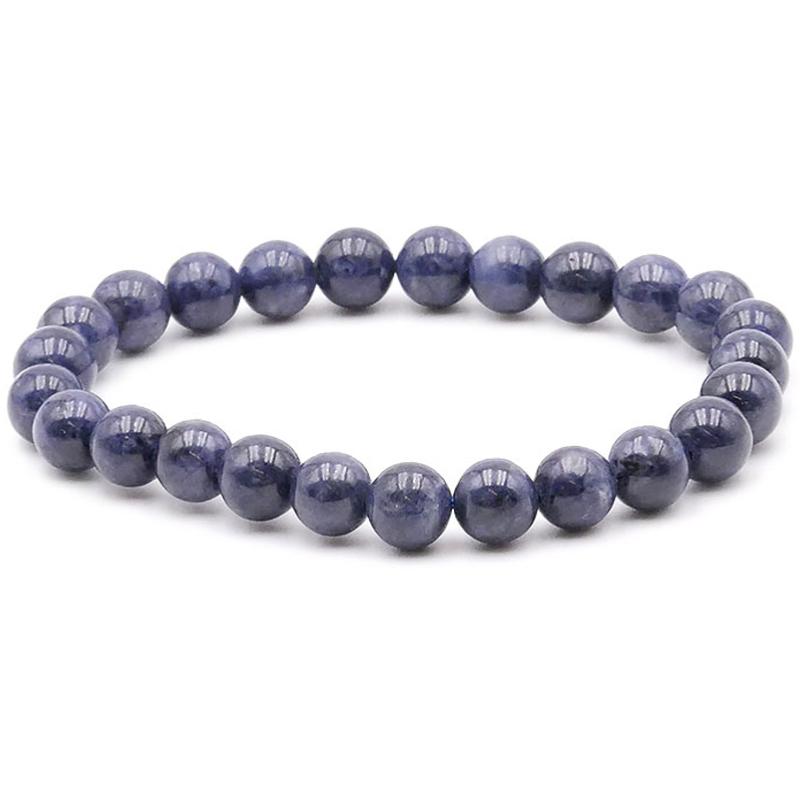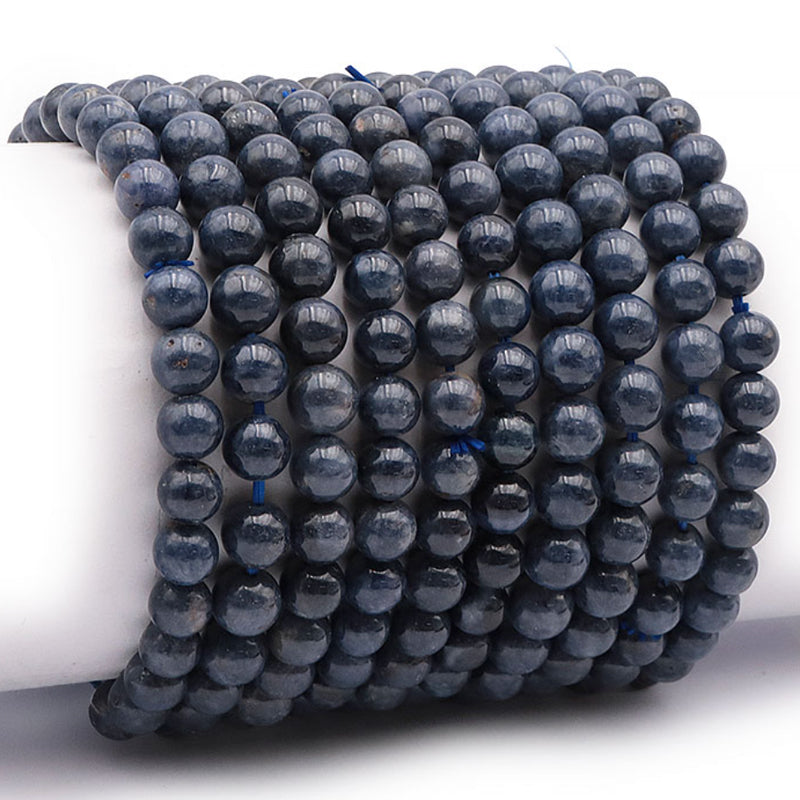1
/
of
2
India blue sapphire bracelet A (7-8mm balls)
BRA-SAP-09
8c984efa-30a8-5524-41cc-ae7b332135e6
028d80eb-2b30-41d4-b221-bda49eca04cf
5
/
5 -
1
avis
- Regular price
-
79,92€ - Regular price
-
99,90€ - Sale price
-
79,92€
Tax included.
Shipping calculated at checkout.
Couldn't load pickup availability
Learn more
BRA-SAP-09
Origin: India
Grade: A
Dimensions:
Approx 17-18cm - Fits all wrists with a size of 16-18cm
Bracelet made of 7-8mm balls of very high quality blue sapphire.Approx 17-18cm - Fits all wrists with a size of 16-18cm
Weight:
About 30g
About 30g
Origin:
India
India
Grade:
A = good
A = good
Patterns and colors may vary slightly from one bracelet to another.
Sapphire, in Latin sapphirus, derived from the Greek sappheiros, means "blue". In Hebrew, sappir translates to "the most beautiful thing". However, it has other translations in other languages such as Hebrew, Chaldean or Sanskrit. In the latter language, sapphire is understood to mean "sacred to Saturn". The origin of this name seems plausible, given that in Indian astrology, sapphire is the gemstone attributed to Saturn.
The blue sapphire is mentioned in many mythological and religious stories. The Persians were convinced that the blue of the sky came from the sapphire. In the Bible, the throne of God is a famously bright blue due to the presence of sapphires. In addition, the sapphire is one of the twelve stones set in Aaron's breastplate. It is also found in the foundations of Jerusalem.
The French form of saphir dates back to the 12th century in one of the manuscripts of the monk and poet Philippe de Thaon, then later, during the Renaissance, in the dictionary of Jean Nicot, a French diplomat renowned for his introduction of tobacco into France.
In Antiquity, the sapphire was associated with the Gods, Jupiter among the Romans, Zeus among the Greeks, Indra in India. However, the descriptions made by Theophrastus (371 BC - 288 BC) and Pliny the Elder (23 AD - 79 AD) suggest that it was rather lapis lazuli. However, rare engraved sapphires have been found during archaeological excavations. An Egyptian intaglio, representing a princess or a queen dating from the 2nd century BC, is kept at the National Library.
In the 4th century, the Franks and Visigoths had a unique expertise in goldsmithing called cloisonné. Craftsmen inlaid colored stones in fine compartments using copper or gold. This process, also used in Merovingian and Carolingian art, was applied to the reliquary box of Teuderic, the vase known as Saint-Martin or the ewer of Charlemagne. All these magnificent creations are set with sapphires.
In the Middle Ages, sapphires adorned various objects and jewelry. Many vases and chests have been found decorated with gems such as garnets and sapphires. A sublime 135-carat sapphire is currently on display at the Museum of Natural History. This is the great sapphire of Louis XIV.
The largest sapphire in the world is a black star sapphire from Queensland, Australia. A young boy brought it home and used it as a doorstop. His father, a miner, identified it as a precious stone and decided to sell it. Jeweler Harry Kazanjian was the first buyer for $18,000 and cut this magnificent stone. Today, it is called the Black Star of Queensland, it weighs 733 carats, or nearly 150 g, and is estimated at $100 million.
Like ruby, sapphire belongs to the corundum family and to that of precious stones, in the same way as diamond or emerald. It has this incredible blue color due to its composition of iron and titanium. It has a hardness of 9 on the Mohs scale. Only diamond can scratch it, because it has a hardness of 10 on this same scale. Sapphire is formed in small rivers running through the mountains, then extracted from the deposits.
In lithotherapy, sapphire acts enormously on the mind. It improves memory, strengthens concentration and develops intuition. It is recommended for students especially during exam periods, for people in retraining. It promotes spiritual elevation and meditation.
Moreover, it stimulates creativity and inspiration. This fabulous blue mineral increases imagination and is perfectly suited for all artists, writers, sculptors, etc.
It symbolizes anchoring, stability, solidity and fidelity. Thus, it is the stone of engagements. It allows to overcome the difficulties and trials of life alone or as a couple. Wearing a sapphire strengthens courage and will in order to achieve one's goals.
Stone of patience, tenacity and loyalty, sapphire is perfect for people who are too rushed, too stressed. Sapphire soothes anger, jealousy and resentment. It calms worries, regulates nervousness. At the same time, it engenders perseverance, self-confidence and assurance.
This stone is perfect for hyperactive people thanks to its calming action. It provides serenity, restores the joy of living, enthusiasm. It releases buried fears and anxieties. It removes blockages caused by childhood trauma.
Features
Color :
- Blue
Astrological sign:
Stone Type:
- Ball Stones
Age :
- Adults
Gender :
- Unisex
- Women



India blue sapphire bracelet A (7-8mm balls)
- Regular price
-
79,92€ - Regular price
-
99,90€ - Sale price
-
79,92€
8c984efa-30a8-5524-41cc-ae7b332135e6
028d80eb-2b30-41d4-b221-bda49eca04cf
5 / 5
Basé sur 1 avis soumis à un contrôle
- Pour plus d’informations sur les caractéristiques du contrôle des avis, la possibilité de contacter l’auteur de l’avis, les délais de publication et de conservation des avis, ainsi que les modalités de suppression ou modification des avis, merci de consulter nos CGU.
- Aucune contrepartie n’a été fournie en échange des avis, à l’exception des avis indiqués avec la mention "Récompensé et vérifié" et dont les modalités de contrôles sont disponibles ici.
- Les prénoms affichés avec un * ont été pseudonymisés à la demande de l'auteur.
-
1
-
0
-
0
-
0
-
0
Trier les avis
-
5/5VérifiéCollecté et vérifié par Avis Vérifiés
Parfaitement conforme à mes attentes, très joli bracelet !
Cet avis vous a été utile ? Oui (0) Non(0)SignalerAvis du , suite à une expérience du par CARTIER M. C.
Afficher les commentairesMasquer les commentaires
- 1
-
100% SECURE PAYMENT
Paypal, credit card, check, transfer
-
FREE DELIVERY
from 40€ purchase
-
SATISFIED OR REFUNDED
14 days to change your mind
-
CUSTOMER SERVICE AVAILABLE
contact@laboiteacailloux.com
Subscribe to our newsletter
to receive all our offers, good deals and new products from La Boite à Cailloux




